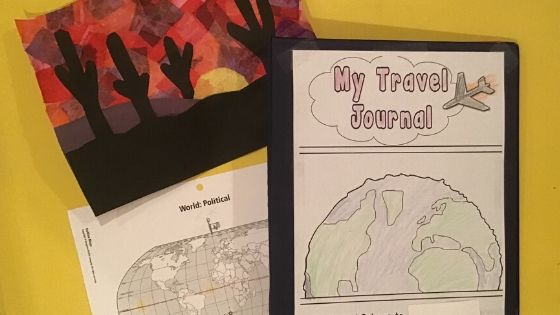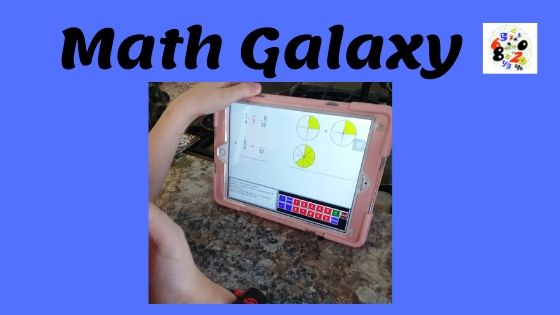Writing can be a challenge for some kids, especially creative writing. Sometimes, they get it in their heads that they can’t write. Other times, they are scared to share their ideas. Some get so hung up on the physical act of writing or trying to get EVERY. WORD. SPELLED. CORRECTLY, that they won’t write.
I just described my son at various points in our homeschooling. For one reason or another, he has been reluctant to write throughout the years.
Between working with children with learning disabilities and my son, who has struggled with some aspect of writing over time, I have found many different ways to help a reluctant writer.
Let’s look at some ways to help a child who struggles with writing.

Strategies to Help Your Reluctant Writer
1- Shared Writing
One trick I learned early on to help a reluctant writer was to write a story together.
So, how does this work?
You or your child can come up with a story idea. You begin the story by writing down the first few sentences to get the story going.
Once you’ve started the story, ask your child what should happen next. This will get them to add to it. When they give ideas, write them down. Both of you will keep adding details until the story is finished.

I guarantee once your child gets going, the ideas will start flowing.
Why does this work?
Sometimes, kids don’t know how to get started. By coming up with an idea and starting things, you’ve taken the pressure off them. You have also made it a joint effort, so they don’t have to develop the whole story alone.
Shared writing also helps the kids who struggle with handwriting, poor mechanics, and are obsessed with spelling. They have someone who is writing it for them. They can let their ideas flow without the other stuff getting in the way
2- Picture Prompts
Kids love picture prompts!
All you have to do is go online and find a picture of a spooky house or a silly picture of a cat’s head on a shark’s body. Viola! Your kids are sure to get writing. Find pictures you think will entice your child to write.
At first, they may only write a couple of sentences. The key is to act excited about their writing and ask questions. Encourage them to write down what they tell you.
Want some picture prompts for older kids? Check out these prompts HERE.
Why does this work?
A picture provides a visual image for kids. They aren’t starting from scratch.
Remember, some kids are visual learners. A picture provides them with a good visual cue to stimulate their imagination.
3- Story Starters and Writing Prompts
You work with your kids every day, and you know them well. If your child struggles with coming up with ideas, giving them a story starter or writing prompt will help.
To clarify, I consider a story starter a sentence that STARTS the story for the child, while a writing prompt gives an idea that they expand on.
For example, my son loves dragons. I might give him a story starter like this: “It was a quiet afternoon. I decided to explore the woods in my backyard when I saw a dragon sitting under a tree. I…”
If I wanted to give my daughter a writing prompt, I might give her: “You have won a trip to anywhere in the world. Tell me where you would go and what you would do there.”
Some kids do well with story starters while others do better with prompts. Experiment to see which one gets your struggling writer writing.
If you want more writing prompts, you might like Writing Prompts for Kids: 20 Prompts for Every Season. You’ll have ideas for all year.
Why does it work?
Many reluctant writers have trouble coming up with ideas or are afraid to come up with their own. Using your child’s interests to spark their imagination and get them writing is important.

4- Story Cards
My kids will occasionally dig out our story cards. They are fun and can often be funny, too.
What are story cards?
Story cards are cards with different characters, settings, and plots. They are easy to make. All you need is some index cards.
I write down a wide range of characters, settings, and plots that will interest my kids. Each card has one idea on it.
For character cards, I might have characters like a ferocious dragon, a purple alien, a little boy, a spaceman, a private investigator, etc. I may also have setting cards like a newly discovered planet, mountain top, dark city street, thick forest, etc. All of these ideas interest my kids.
When it is time to write, a child draws a card from the character, setting, and plot pile and uses it to write a story.
Scholastic also has a site that generates ideas for a story. You can find it HERE. Your child can choose a theme such as sci-fi, adventure, or fantasy. Then, they spin different wheels to generate ideas.
When I spun the wheels (for grades 4-6), my story idea was: “Write a tall tale about an obnoxious conqueror who flies on a magic carpet.” The kids can write their story on the Scholastic site, or take their idea and write it independently.
Whether you use story cards or the Scholastic Story generator, both give kids different ideas for characters, plots, and settings.
Why does this work?
Story cards provide a starting point, but best of all, they help the child who is scared to come up with their OWN ideas.

5- Dictation
Sometimes kids are so focused on the act of writing, they CAN’T get their ideas down. They worry so much about letter formation, punctuation, and spelling that they lose their ideas along the way.
If this is the case, have your child dictate their stories. After, they can type their story or re-copy.
Why does this work?
Kids can tell their stories without anything getting in their way. It’s that simple.
6- Draw and Write
One fun way to encourage reluctant writers is to have them draw a picture FIRST and then write the story. By far, this worked the best with my son.
You will have to make sure your child doesn’t get so busy with their picture, they forget to write. You may need to remind them you want to READ what is happening in their picture, not just see it.

Older kids may prefer making a Comic Strip. They draw out the pictures and figure out the best way to write words to tell the story.
Why does it work?
Drawing helps some kids brainstorm ideas. My son gets very animated as he draws. He is almost acting out the story as he goes. It helps him to plan out what he is going to write.
7- Use Books They Like to Get Them to Write
Lastly, one great way to get a struggling writer to write is to use stories they are familiar with as examples. I use to do this a lot in teaching.
With younger kids, take stories like There was an Old Woman that Swallowed a Fly or If You Give a Mouse a Cookie, and have them create their own story using the same predictable pattern. They can write a story called If You Give an Alien a Spaceship or There was an Old Mommy that Swallowed a Lego.
You may need to get a little more creative with older kids. If they like books like Percy Jackson, Harry Potter, or Magic Tree House, have them make the story their own.
For example, if they like Magic Tree House, have them write their own story about a treehouse being transported to a specific location. Or if they love Percy Jackson, they can write their myth about a Greek God they create.
Why does this work?
Kids aren’t re-inventing the wheel. They are using a story format they know and are comfortable with, using it to help them create a story using a formula that works.
Kids don’t have to hate creative writing or struggle with it. Reluctant writers often need the right intervention to overcome whatever roadblock is holding them back.
Use the tips above to help you find what will help your reluctant writer blossom into a confident, creative writer.





